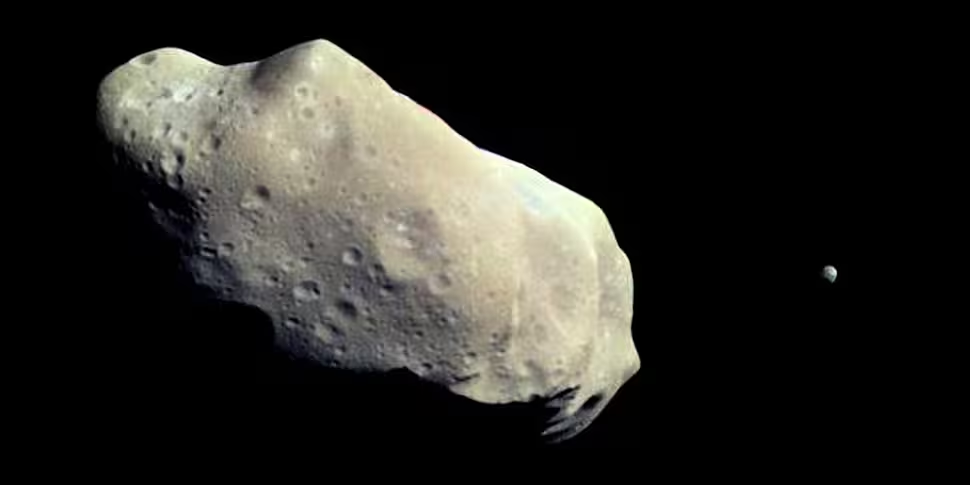So the world’s going to end - what do we do? That was the subject of a ‘war-games’ like event that took place in last week. The Planetary Defense Conference met in Italy to explore a ‘hypothetical asteroid impact scenario’ - how the world would respond if it was discovered that a large asteroid was heading straight for Earth.
Even if the asteroid wasn’t big enough to wipe out life as know it, the impact could still be a major catastrophe. Depending how far in advance the threat is discovered, different solutions would be available. Could we ‘deflect’ the asteroid using a nuclear device, laser of explosion? Blowing it up entirely would be a risky proposition, risking showers of rock colliding with Earth. And, worst case scenario, the asteroid actually hits Earth - what then? Could the world effectively plan for and respond to such an impact, which would surely be a disaster on a scale we have never seen before.
On today’s Right Hook, Shane Coleman talks to Donald Yeomans, author of “Near-Earth Objects: Finding Them Before They Find Us”. Listen live from 6pm at newstalk.com
It's worth pointing out that we have increasingly impressive tools to monitor our skies for potentially dangerous object. It’s also important to remember that it’s relatively common that small asteroids hit Earth - or more accurately burn up in our atmosphere. This NASA image illustrates how common these small events were over the last twenty years:

Most notably, the Chelyabinsk meteor exploded above the Ural region in Russia in 2013 - an incident which was captured on camera by several witnesses.
Impact areas also matter. If a meteor exploded over the sea, it would be a very different situation to it exploding over a populated area (although there could be the risk of tsunamis or other related catastrophes). Of course, if a large asteroid did collide with Earth, it would likely affect the entire planet, not just the impact zone.
Deflecting an asteroid would be almost definitely be the first methods attempted if a large asteroid was discovered to be on a collision course with Earth. In the hypothetical sitauation discussed in Italy last week, the asteroid was estimated to be around 100m-500m wide - perhaps not enough for an extinction event, but certainly enough to cause a major disaster and significant environmental impacts. It’s estimated a five-mile wide asteroid could mark a true mass extinction event - and it’s not just the impact, but the dust cloud and ‘global cooling’ that would follow such an impact. After all, many scientists still believe that the dinosaurs were doomed after being caught up in a major impact. Oh, and then there's the risk of civilization collapsing: even if humans did survive, the social, political and practical impacts would be a whole other story.
These doomsday or massive disaster scenarios have been of great interest to Hollywood over the years, with filmmakers (sometimes in consultation with scientists and disaster response groups. Sometimes.) having conjured up various of possible methods of saving humanity - whether that’s the entirety of the human race or simply a select few. The methods have ranged from the fantastical to the plausible.
It’s still strange to think we had two ‘impact’ films in such quick succession, and both similar in several key respects. In Armageddon, a crew is sent into space to split an asteroid in two with a nuclear bomb. In Deep Impact, the concept is similar, but the execution is different - the mission to destroy or deflect the comet actually fails and it is accidentally split, leading to further drama and desperation (and, eventually, an actual impact). Deep Impact has been called the more scientifically accurate of the pair - accepting, of course, that they were both fairly preposterous in many respects, not least Armageddon’s soundtrack.
Considerably less plausible than either of the above films, the plot of When Worlds Collide features a ‘rogue star’ that’s set to collide with Earth. In a hopeless situation, a ‘space ark’ is created to save a few lucky humans. Certainly more fiction than science, the film does at least raise the question of what would happen if all else fails. The concept of an ark on Earth was explored in 2012, which remains among the most absurd of disaster films - albeit featuring geographical and meteorological disasters rather than a deadly asteroid.









